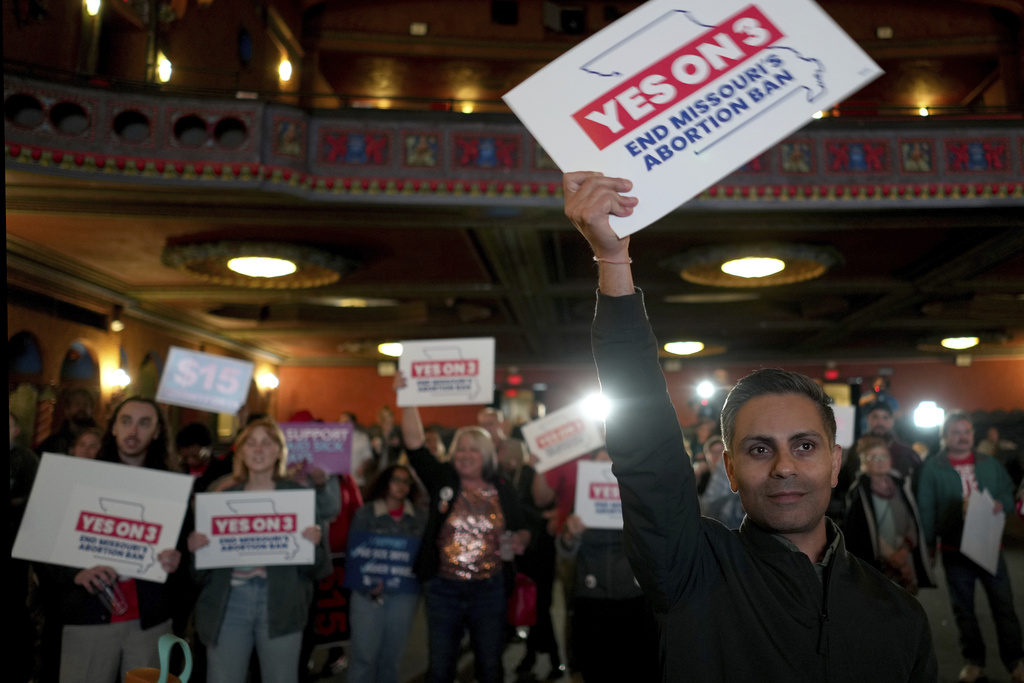Abortion Rights Win on Ballots, Face Court Challenges \ Newslooks \ Washington DC \ Mary Sidiqi \ Evening Edition \ In recent elections, abortion rights advocates secured victories on seven ballot measures but experienced their first defeats since Roe v. Wade was overturned in 2022. Missouri’s sweeping abortion ban now heads to court as Planned Parenthood seeks to overturn restrictive state laws. States showed varied outcomes, reflecting complex voter attitudes on reproductive rights.

U.S. Ballot Measures on Abortion: Key Takeaways Quick Looks:
- Overall Results: Seven wins for abortion rights advocates, three losses.
- Missouri’s Amendment: Legal battles to challenge state abortion ban begin.
- Conservative States: Mixed outcomes with notable wins and losses on measures.
- Florida’s Defeat: Measure fell short due to a 60% threshold requirement.
- Political Impact: Abortion debates didn’t secure Senate wins for Democrats.
- Amarillo, Texas: Voters rejected an anti-abortion ordinance aimed at travel bans.
Deep Look:
Missouri emerged as a key battleground, being the most populous state with a measure aimed at rolling back an existing abortion ban. This state bans abortion at all stages of pregnancy, with limited exceptions only to save the mother’s life. Although the amendment does not directly override state laws, it empowers advocates to take legal action to challenge the constitutionality of the ban. On Wednesday, Planned Parenthood affiliates took the first step by filing a lawsuit in state court, seeking to invalidate Missouri’s extensive abortion restrictions and related regulations that critics say are excessively burdensome.
Nationwide, the ballot results reflect complex public attitudes. In Florida, an amendment to secure abortion rights faced unique challenges. The proposal won a majority but failed to meet the 60% approval threshold required for constitutional changes. Additionally, significant state GOP opposition, including funding from Governor Ron DeSantis, contributed to its defeat.
The election results indicate nuanced voter behavior. Republican-leaning states like Missouri and Montana passed abortion rights measures while still electing GOP candidates for president, Senate, and governor. In Montana, despite a focus on reproductive rights, incumbent Democratic Senator Jon Tester was defeated by Republican Tim Sheehy. Similarly, Texas Rep. Colin Allred’s Senate campaign against Ted Cruz failed, even after a $5 million ad campaign spotlighting abortion.
In Ohio, incumbent Democrat Sherrod Brown was unseated by Republican Bernie Moreno, despite a late-campaign controversy involving Moreno’s criticism of suburban women prioritizing abortion rights. In Wisconsin, a tight race between Democratic Sen. Tammy Baldwin and Republican Eric Hovde emphasized abortion as a major issue, possibly heading to a recount due to close results.
In an unexpected turn, voters in Amarillo, Texas, rejected a local anti-abortion ordinance that sought to ban residents from traveling out of state for abortions. The “Sanctuary Cities for the Unborn” measure, which would have permitted lawsuits against anyone aiding such travel, was defeated by nearly 60% of voters. Lindsay London, a nurse and co-founder of the group opposing the measure, said, “We hope to set the tone… that we will not penalize anyone for seeking health care when they’re facing an extreme travel ban in their own state.”
This election cycle demonstrated that while abortion rights have substantial voter support, outcomes can vary greatly based on local conditions, voter turnout strategies, and competing measures. The broader implications of these results will likely play out in courtrooms and legislative chambers across the country, shaping the ongoing debate over reproductive rights.







